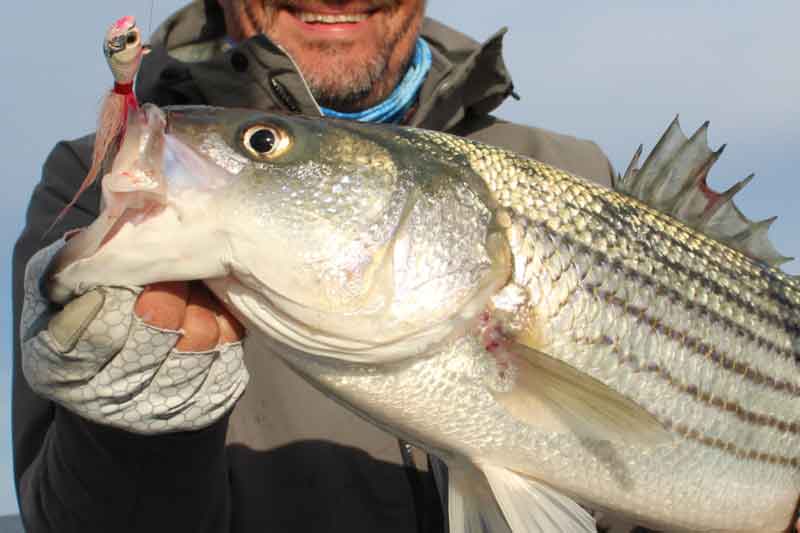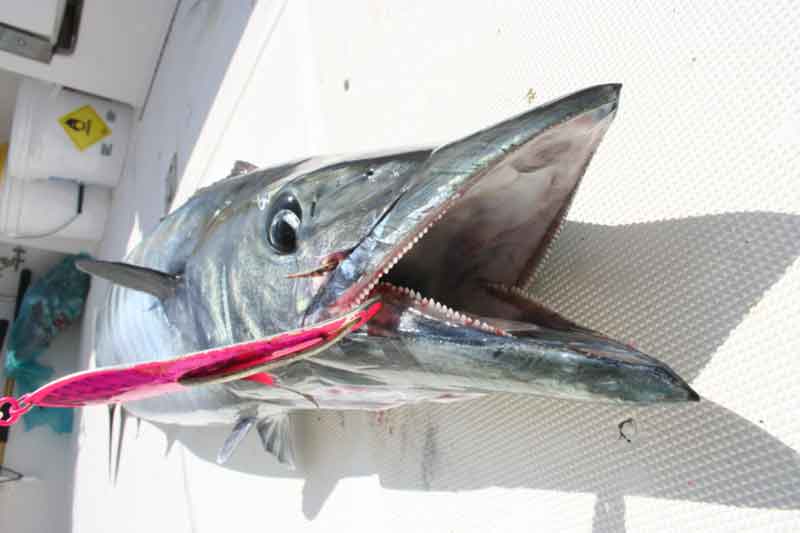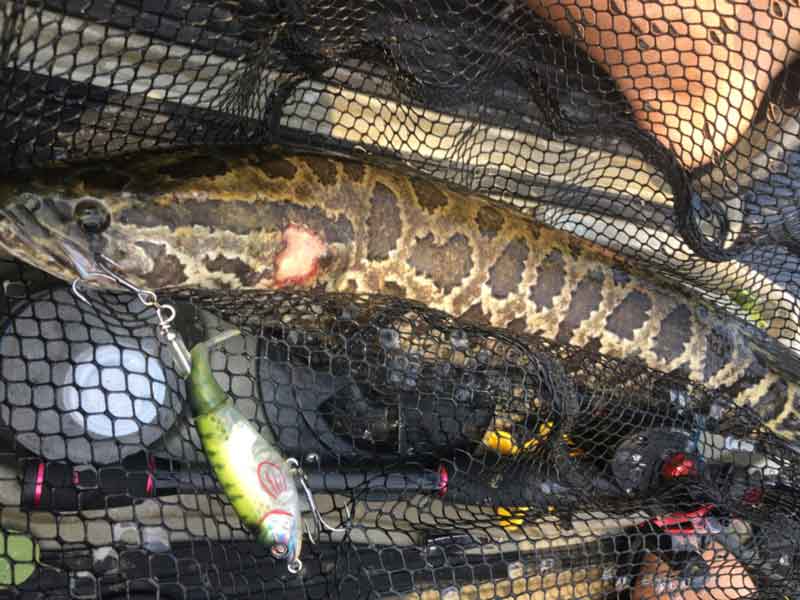Whether Chesapeake Bay fishing is your favorite way to wet a line, offshore trolling is your main gig, or you think nothing beats chasing smallmouth bass in small streams, you surely have a tacklebox or three stuffed with fishing lures. No matter who you are and where you fish, make sure these three must-have lures find a home in those boxes. Because time and experience will prove over and over again that no angler should leave home without ‘em. So drum roll, please:
- Bucktails
- Spoons
- Topwater Lures

Bucktail Lures
Bucktails, so named for the deer tail hairs used to give a lead-head a fishier appearance, are among the most versatile lures on Earth. People use tiny versions (hey, shad darts are bucktails too) to catch panfish, mid-sized bucktails for jigging, and giant bucktails for trolling. You can find ‘em in a million different shapes, colors, and sizes. Bucktails can be fished plain, with a teaser on the hook, or with a chunk of bait added on to sweeten the deal. Put all of these factors together, and what do you get? The ultimate in fishing lure versatility—you can catch everything from a white perch to a wahoo, on a bucktail.

Spoon Fishing Lures
Spoons have been wobbling through the water since fishing rods consisted of no more than some sinew tied to a stick, and reflective shells have been discovered in aboriginal archaeological sites all around the planet. Basic? Youbetcha—but also deadly effective. In fact, literary references to using metal spoons for catching fish can be found in writings dating to the Roman empire. Why have they been around for so long? Because spoons work, period. Their combination of flashing and vibrating help fish find a moving spoon in all types of water and lighting conditions, they look like wounded fish moving through the water, and they can be used for everything from trolling from a boat to casting from the shoreline. Some spoons are designed to be jigged vertically, too. Here's a quick look at how to fish 'em:
Added bonus: the generally hefty weighs a spoon provides makes for easy long-distance casting. You may want a one-inch Acme Tackle Little Cleo when casting in a stream for brook trout versus a very different 10-inch Crippled Alewive when striped bass fishing is in the plans, but whoever you are and wherever you fish we hope you have a wide selection of spoons at your fingertips, right now.

Topwater Plugs
Topwater plugs have a far more limited range of applicability than spoons or bucktails, they’re often only effective in very specific conditions, and many species of fish aren’t ever caught on topwater plugs. Hooking a black sea bass on topwater, for example, would be a bit of a stretch. So, why are we including them in this list of must-have fishing lures? This one’s all about the rush, people. Few anglers who have seen a blow up on a topwater frog or experienced the thrill of a walk-the-dog explosion would argue that any other form of strike is as adrenaline-inducing. That’s why we go fishing in the first place—and when it comes to excitement, a topwater bite simply can’t be beat.